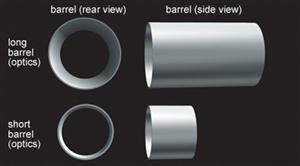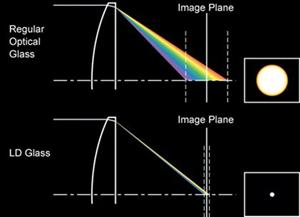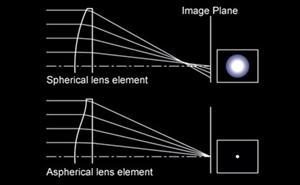From the Manufacturer

The Tamron 17-50mm is an extremely high-quality standard zoom with a high luminosity of 2.8 over the entire focal length range. It belongs to the Super performance (SP) class of Tamron lenses distinguished by ultra high optical and mechanical quality. The high luminosity that this lens offers is ideal for low-light conditions and professional image composition. The result is images with smooth, even bokeh (background blur), where the subject is virtually released from the background.
The incredibly short minimum focus distance of only 27cm was achieved by using 3 XR glass elements (Extra Refractive) in the front group, coupled with a new mechanical design, whilst at the same time keeping the construction compact. The maximum magnification ratio of 1:4.5 and low weight of just 430g are added to the many features of this lens. Image defects are kept at an absolute minimum through the application of aspherical elements and LD (Low dispersion) glass as well as a special coating of internal glass surfaces (Internal Surface Coating). The result is especially sharp and high-quality images.

Super Performance for Discriminating Shooters (SP)
Tamron SP (Super Performance) series is a line of ultra-high-performance lenses designed and manufactured to the exacting specifications demanded by professionals and others who require the highest possible image quality. In creating SP lenses Tamron’s optical designers put their foremost priority on achieving superior performance parameters—they are all designed to a higher standard with little regard for cost constraints. As a result, Tamron lenses bearing the SP designation feature impressive and innovative designs that have established an enviable reputation for excellence among those knowledgeable photographers that demand the very best.
Di-II Lenses
Tamron Di-II lenses are engineered expressly for digital SLR cameras with image sensors commonly referred to as APS-C, measuring approximately 24mm x 16mm. Rendering an ideal image circle for APS-C sensors, Di-II lenses also include properties to optimize digital imaging performance.
Special Glass for Better Performance and More Compact Lens Designs
XR (Extra Refractive Index) glass can bend light rays at steeper angles, thereby decreasing the physical length of the lens while enhancing imaging performance by minimizing optical aberrations. This has allowed Tamron to develop a line of shorter, smaller-diameter, lighter lenses without sacrificing lens speed, and actually upgrading image quality compared to older designs. XR glass is costlier than conventional glass but it yields enhanced optical power distribution, making possible many of the outstanding and innovative lens designs that bear the XR designation. XR glass, with its superior light-bending power, makes it possible to design a short-barrel lens with the same light-gathering ability (aperture value) as a long-barrel lens—even with a smaller lens diameter. By using this principle Tamron has been able to shorten the length of the entire optical system and produce lighter, more compact lenses of the same speed, and also to provide greater zoom ranges in lenses that are much more convenient to carry and hand-hold.

Low Dispersion (LD) Glass for Greater Lens Sharpness
Low dispersion (LD) glass elements in a lens help reduce chromatic aberration, i.e. the tendency of light of different colours to come to different points of focus at the image plane. Chromatic aberration reduces the sharpness of an image, but glass with an extremely low dispersion index, has less of a tendency to separate (diffract) a ray of light into a rainbow of colours. This characteristic allows the lens designer to effectively compensate for chromatic aberration at the centre of the field (on axis), a particular problem at long focal lengths (the telephoto end of the zoom range), and for lateral chromatic aberration (towards the edges of the field) that often occurs at short focal lengths (the wide-angle end of the zoom range.)
Internal Focusing (IF) System
Internal focusing (IF) provides numerous practical benefits to photographers, including a non-rotating front filter ring that facilitates the positioning of polarizing and graduated filters, and more predictable handling as the lens length does not change during focusing. Crucially, Tamron’s Internal Focusing (IF) system provides a much closer minimum focusing distance (MFD) throughout its entire focusing range. Also, IF improves optical performance by minimising illumination loss at the corners of the image field, and helps to suppress other aberrations that become more troublesome at different focusing positions.

Hybrid Aspherical Elements Provide the Ultimate in Image Quality and Compactness
Tamron uses several hybrid aspherical lens elements in many lenses bearing the Aspherical designation. These innovative optics allow us to achieve exceptional image quality, and at the same time produce lenses that offer remarkable zoom ranges in extraordinarily compact packages. By perfecting theses cutting-edge advances for series production, Tamron has virtually eliminated spherical aberration and image distortion from the high-power-zoom series. Through the effective application of Hybrid Aspherical Technology, one lens element can take the place of multiple elements without compromising performance. This is what allows us to produce remarkably compact long-range lenses that deliver a uniformly high level of image quality at all focal lengths and apertures.